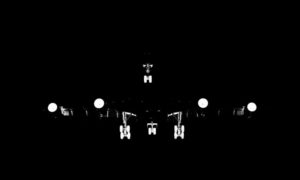Paolo Nicola Rossini
Paolo Nicola Rossini was born in Milan in 1972. He lives and works in Monaco
He has always been passionate about photography but he started to develop a professional research only since 2007. It took him toward an experimental approach with non traditional photographic results. The interpretation of ordinary and apparently trivial subjects becomes his starting point to explore new ways to represent reality.
In the beginning he focuses on the creation of photographic compositions and sequences with the main purpose of catching the sense of movement, the change of scenery and perception.
Then attention moves toward a more conceptual approach based on visions of landscapes, nature, urban environments which are overlapped and melted with raw surfaces that make subjects look almost indefinite and suspended in time. These works, included in the series “Passato Prossimo” (“After Present”), move from the concept of a present that becomes immediately past, the first steps toward dissolution.
This theme is analalyzed further in the works included in the series “Disgregazione della Memoria” (“Fading Memory”). In these photographs, shot using pinhole process, the subjects look even more vanishing. The sense of movement enhances further the blur of the images which seem to disappear in the grainy backgrond. Time remains the main concept, focusing on memory that becomes weaker with time, images turn faint and slowly vanish.
His work at this point passes through a phase of further experimentation that takes form in two different projects showing an even more intimate vision of reality.
On one side, in the series “Transitions”, exposed in a collateral event to the 55th Venice Biennial, the works are produced through a process that combines video and pinhole photography. Short videos with multiple subjects are created, projected and photographed with long exposures to permit the camera to catch all the images in a single photograph. This process creates an alchemy of forms and colors with a clear abstract nature. Space, time and movement melt forming completely new images open to multiple interpretations.
On the other side, “The Black Series” is a purely photographic work that shows a world full of darkness where the subjects are the actual source of light. In these works places and objects emerge in an atmosphere suspended out of time. Aerial views are the main feature of this series. They are often turned upside down to give a sense of greater distance. Places become silent, methaphisical, almost belonging to an alien world.
Transitions is followed by a period dedicated to a deeper study of art history, with special attention to the evolution of photography since its origins. In this phase he experiments several new concepts that will be developed in the works produced in the following years.
Main theme of the next series of works is “simultaneity” that gives name to the “Simultaneous Series”.
In this case the tecnique used is multiexposure. The idea explored in the series “Transitions” is repeated with a different approach. More subjects are photographed with multiexposed shots, often in movement, creating a single image directly from the camera. The alchemy of forms, colors and light creates the images almost beyond the control of the author. The chromatic inversion makes the images further independent from the reality to confirm once more the intention of representing an interior imaginary although built on the actual world.

